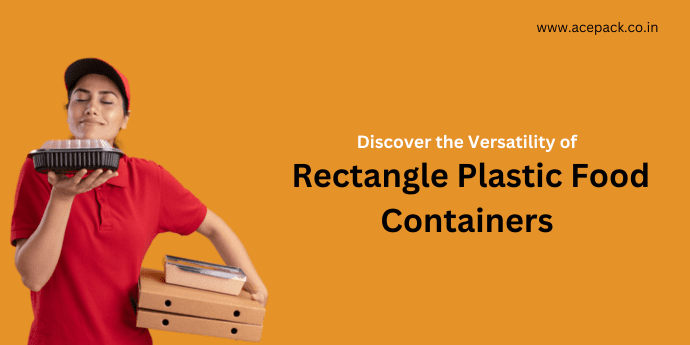
Plastic food containers are a popular choice for storing and transporting all kinds of food items. Among these containers, rectangle plastic food containers are particularly popular due to their shape and versatility. These containers come in various sizes and can be used to store a variety of foods, including leftovers, snacks, and even entire meals.
It is durable. Made from high-quality plastic materials, these containers are designed to withstand daily wear and tear, including drops and bumps. They are also safe to use in the microwave, dishwasher, and freezer, making them a convenient option for busy individuals who want to prepare and store meals in advance.
These food containers are a versatile addition to any kitchen. These containers come in a variety of sizes, allowing users to store anything from small snacks to large meals. They are perfect for keeping leftovers fresh, packing lunches, or storing dry goods like pasta and cereal.
Additionally, many rectangular plastic food containers are microwave- and dishwasher-safe, making them easy to clean and use for reheating.
Another advantage is their stackability. They can be easily stacked on top of each other, making them perfect for small kitchens with limited storage space. This feature also makes them ideal for meal prep, as users can stack multiple containers in the fridge or freezer.
In modern times, food storage has become a crucial aspect of our daily lives. With the increasing demand for fresh produce and perishable items, it is important to adopt a sustainable approach to food storage. This not only helps reduce food waste but also ensures we are doing our part in protecting the environment.
One of the best ways to achieve sustainable food storage is by investing in reusable containers. These containers can be used over and over again, reducing the need for disposable plastic bags or containers. Glass containers are an excellent choice as they can be used in the microwave, freezer, and dishwasher, making them highly versatile.
Another sustainable approach to these wraps is to use eco-friendly alternatives to plastic wraps, which can be used to wrap sandwiches, fruits, and vegetables. They are made from natural materials like organic cotton and beeswax, making them biodegradable and compostable.
Rectangle plastic food containers are a popular choice for food storage and transport, as they are durable, lightweight, and easily stackable. There are several types of food containers available on the market, each designed for specific purposes. Here are some of the most common types of rectangle plastic food containers:
When it comes to storing food at home, having the right containers can make a huge difference in keeping your food fresh and organized. One of the most common types of food containers used in households is rectangular plastic. These containers are not only affordable but also come in a range of sizes and capacities to meet your storage needs.
In addition to different sizes, these containers also come in various capacities. Some containers have a single compartment, while others come with multiple compartments, making it easy to pack a full meal. It\'s important to note that rectangle plastic food containers should not be used in the microwave or oven, but they are dishwasher-safe for easy cleaning and reuse.
Overall, these containers are an affordable and versatile option for home food storage. With a range of sizes and capacities available, you can easily find the right container to fit your needs.
Here are the bullet points for commercial and industrial sizes of rectangle plastic food containers:
Sure, here are some bullet points comparing transparent and non-transparent containers:
Transparent Containers:
Non-transparent Containers:
In conclusion, rectangular plastic food containers are a convenient and practical solution for storing and transporting food. They come in a variety of sizes and shapes, making them versatile and suitable for different types of food items. They are also lightweight and easy to handle, which makes them ideal for packing lunches and snacks for school, work, or travel. To ensure the safety of your food and your health.